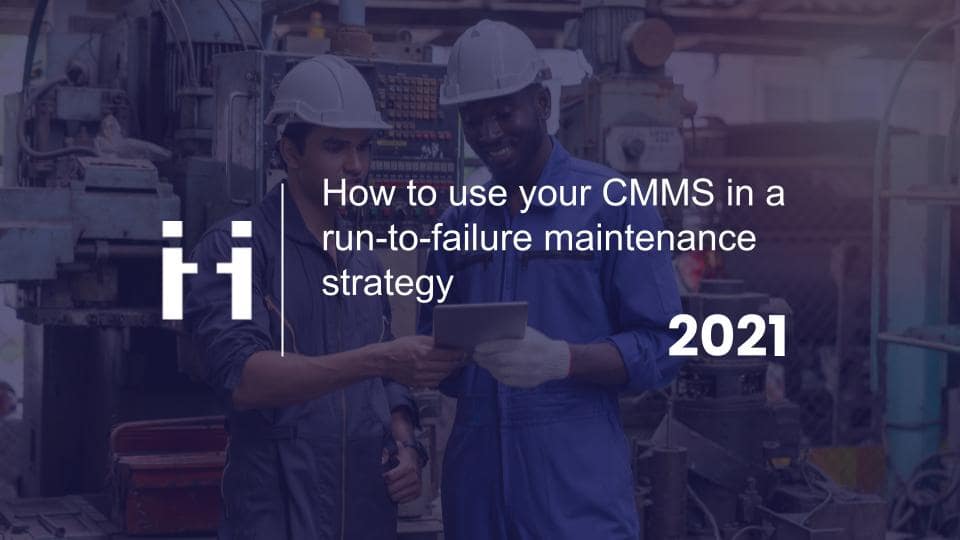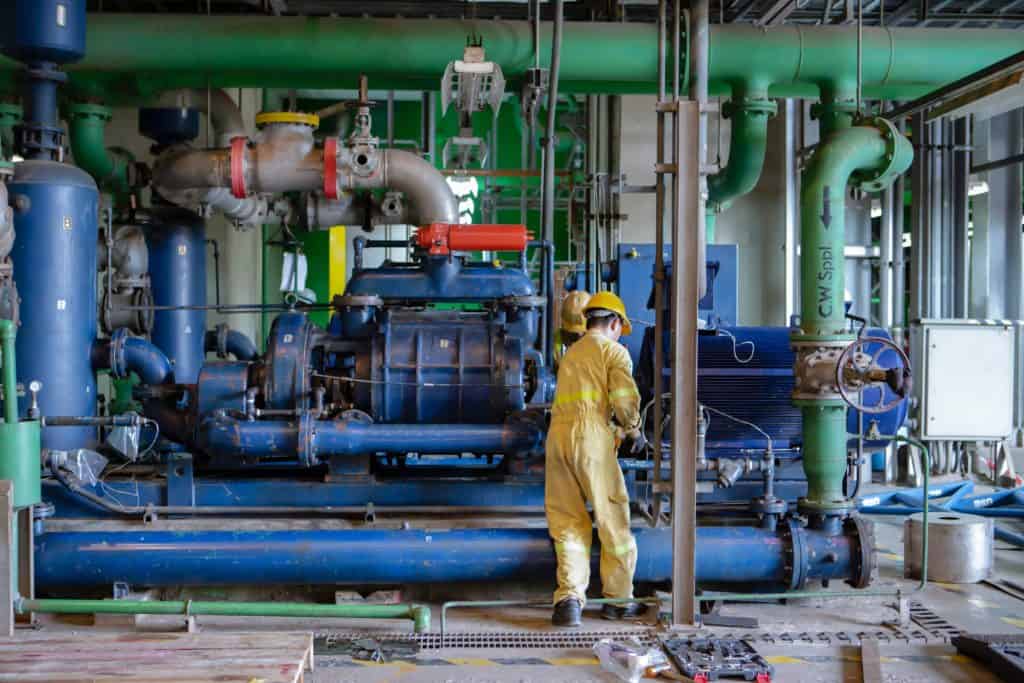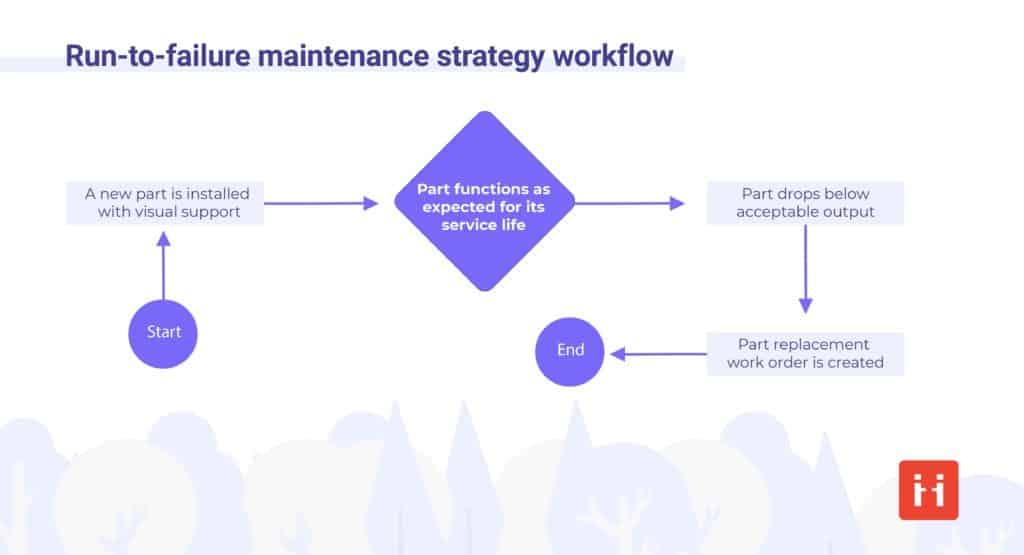
Share this article
Share this article
Often referred to as reactive maintenance, a run-to-failure maintenance strategy means the continued use of a particular component until it fails, at which point it is then replaced or repaired (reactive maintenance), and the process begins again.
However, although run-to-fail can have a place in a well-thought-through maintenance regime, it is a strategy that can be fraught with problems. The use of a run-to-failure maintenance strategy needs to be a decision based on analysis of the equipment. Is it an integral part of a manufacturing process or production line, and what cost savings can be made using run-to-fail? It should not be an excuse for a lax, cost-cutting, or poorly thought-out maintenance regime.

The most obvious advantage, minimal planning. With run-to-fail, the asset or component does not require to be included in routine maintenance planning. All that’s needed is to ensure spare parts are readily available, and wait for the component to fail before replacing.
Applications that could be considered as appropriate for run-to-fail include small items such as light bulbs, leaking tap-washers, or filters. Additionally, this strategy works for stand-alone equipment where a breakdown won’t jeopardize business operations. This could include machines like pallet trucks, or forklifts, where similar units can take up the slack until the required repair/replacement has been undertaken.
The big problem with run-to-fail is its unpredictability. You never know when the asset might fail, and Murphy’s law says it will be at the most inopportune time. Asset spares also need to be kept continually in stock, just in case.
Cost needs to be considered. Is it cheaper to service the component during proactive maintenance, or wait until it fails, possibly affecting other components and requiring more man-hours to repair?

Manual logs for making your maintenance programs as cost-effective as possible are a thing of the past. The greater the amount of equipment and machinery that has to be serviced and maintained on a regular basis, the easier it is to miss key points, and the greater the risk of increasing breakdowns and spiraling maintenance costs.
Nowadays, maintenance AI tools are playing an increasing part in the operational management of machinery and equipment in all areas of industry. Investing in a good computer-managed maintenance system, can quickly get you back in charge of your maintenance program and help you start to reduce costs.
For instance, let’s say you have a distributor that fails twice a year on a piece of non-essential equipment. By logging each failure into your CMMS software, you can begin to build up a picture. A pattern begins to emerge, such as Mean Time Between Failures (MTBF). This allows you to predict with greater accuracy when the item is likely to fail. Using this new data, you can create a new job order, purchase necessary parts, and schedule corrective maintenance as close to the predicted breakdown as possible.
Reliability Centered Maintenance (RCM) is another tool that can be added to your CMMS package, and involves determining the most effective maintenance strategy for every piece of equipment and machinery within the business.
Although preventive maintenance is considered the most cost-effective strategy, no two pieces of kit are the same. Using RCM helps determine the best, least expensive maintenance plan for each asset, taking into account usage, asset profitability, breakdowns, and cost of maintenance or repairs.
Although devised for the aviation industry, running a basic RCM system on your CMMS can pay big dividends. The seven main principles of the system are questions.
1. What is the asset for, and does its performance meet company needs?
2. What does the asset do (conveyer belt, forming tool)? What is its current performance, and can the asset performance be improved?
3. Is asset failure always caused by the same part failure. Do you have similar assets with the same problem?
4. What are the contributing factors of the breakdown? For instance, overheating, electrical failure, or pressure drop?
5. What are the effects of these breakdowns? Danger to the operator, manufacturing or operational downtime, impacts on safety, or repercussions on other working parts?
6. Will the use of a proactive maintenance approach, and its frequency, minimize the effects of asset failure?
7. Are there any alternatives to practice maintenance? If this strategy fails to manage the asset, can it be modified, redesigned, upgraded, or replaced?
All these questions require in-depth analysis for each piece of equipment, to help determine the most cost-effective type of maintenance to apply.

Setting up a CMMS software package is not a difficult task, but it requires input. The greater the amount of historical data you can add (breakdowns, maintenance regimes), its age, frequency of breakdowns, what parts were failing, cost of replacement parts, current maintenance regime, labor, etc., all help to provide a comprehensive analysis of each working part, and helps you determine the most cost-effective maintenance strategy for each asset.
Free E-book available now!